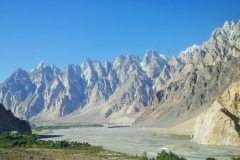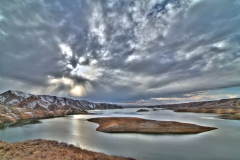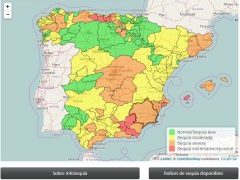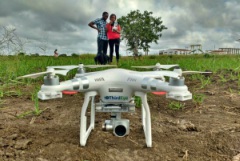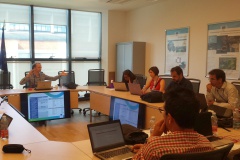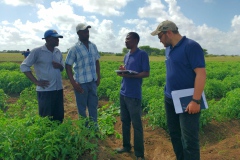Category: Uncategorized
10 November 2016
New publication on the impacts of climate change on the upper Indus basin
The Indus is one of the most meltwater-dependent rivers on Earth, and hosts a large, rapidly growing population and the world’s largest irrigation scheme. Understanding the hydrology of the upper Indus basin is challenging. The Hindu Kush, Karakoram and Himalayan mountain ranges are difficult to access, hampering field measurements of meteorological, glaciological and hydrological processes....
25 October 2016
IMPREX partners kick off the second project year in Crete
Text adopted from IMPREX.eu Time flies when you’re passionate is an apt saying to describe the three intense and productive days of the IMPREX General Assembly. The meeting was hosted by the project partners from the Technical University of Crete and took place from 26-28 September in the scenic landscapes of the Crete island. The...
18 October 2016
FutureWater trains national experts in Armenia on climate change, water and crops
FutureWater provides a training program to technical staff of relevant institutes and organizations in Armenia, on using simulation models for assessing vulnerability and planning of climate adaptation measures, with emphasis on water and agriculture. This week (17-Oct until 22-Oct 2016) a 1-week training is given, on using AquaCrop for assessing water-related and climate change-driven impacts...
3 October 2016
InfoSequia.es: A web-based interactive climate service for drought monitoring in the Spanish Iberian Peninsula
FutureWater redesigns the web-based platform InfoSequía.es by improving the visualization and the interactive extraction of drought information. InfoSequía.es provides weekly updates of drought severity maps, bulletins and historical series of satellite drought indices. This information aims to complement hydrological drought indices published by the Water Basin Authorities and the Spanish National Drought Observatory. Several regions...
22 September 2016
FutureWater awards two young scientists at the BioHydrology2016 International Conference
FutureWater attended the 4th Biohydrology International Conference “Walking on drylands” and awarded a prize to the best oral communication by a young scientist. For taking the end-decision, members of the Scientific Committee and of FutureWater scored all the candidates according to three main fields: Scientific relevance for the management and planning of water resources Applicability...
14 September 2016
ThirdEye presented as innovative technology in Mozambique
From August 29 to September 4 the International Trade Fair FACIM took place in Maputo, Mozambique. On this fair the Dutch Embassy organized a Holland pavilion where several Dutch organisations presented themselves to the Mozambican market. On Wednesday August 31 this pavilion was market by the FACIM WATER EVENT ‘The adaptation of innovative technologies in the Mozambican...
25 August 2016
FutureWater Co-Convenes Session at the World Water Week
The International Centre for Integrated Mountain Development (ICIMOD), FutureWater and Statkraft convene a session on Mountains, glaciers, and hydropower in a changing climate at the World Water Week, organized in Stockholm 28 August – 2 September. This session will highlight the role of mountains in providing water, food, and energy for sustainable growth using examples...
7 August 2016
First week of successful training in Water Resources Modeling for ARA-Sul and ARA-Norte, Mozambique
During the week of 11-15 July, training in Water Resources Modeling (using SPHY) was provided to ARA-Sul and ARA-Norte (water boards) in Mozambique. This training was funded by NUFFIC’s Tailor-Made Training Programme, which is part of the Netherlands Fellowship Programmes (NFP II), and is specifically meant to enhance the overall functioning of an organization by...
7 July 2016
FutureWater organizes coordination meeting for IMPREX project at EU Joint Research Centre
On 27 and 28 June, IMPREX partners working on agriculture and droughts gathered in the premises of the EU Joint Research Centre (JRC) in the Italian city of Ispra. The two-day meeting provided an opportunity to review recent progress, coordinate future actions, and to establish links with relevant activities and laboratories of the JRC. The...
5 July 2016
Identifying and designing business models for the ThirdEye project in Mozambique
How to be a commercial business, and at the same time reach out to the rural poor and enable them to increase their food production and improve their livelihoods? The key ingredient for success is getting the right business model! Agricultural Business Developer Jelle van den Akker investigated the transition of the ThirdEye project from a...
